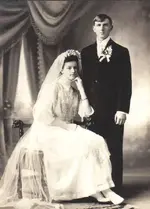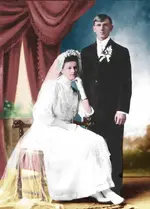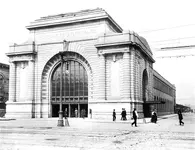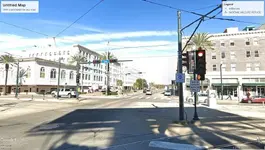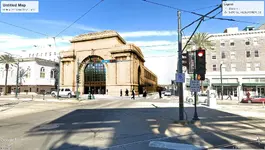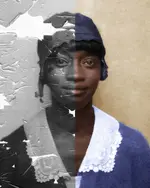Chadeaux
Gold Member
- Joined
- Sep 13, 2011
- Messages
- 5,512
- Reaction score
- 6,409
- Golden Thread
- 0
- Location
- Southeast Arkansas
- Detector(s) used
- Ace 250
- Primary Interest:
- Cache Hunting
- #1
Thread Owner
Original image:
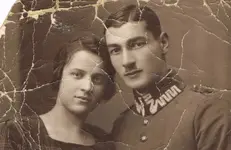
After I cleaned it up:
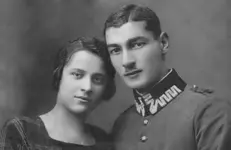
Learned a lot of tricks as I went along. I used Affinity Photo by Serif to remove the damage. I really like how the details of the dress were fixed.
Other parts that took a bit of thinking: Her left nostril (right side of her face in the picture) is a reflection of her right . Since it worked on her nose, her left eye is a reflection of her right. The hair on his left side (right side in the picture) was not present in the original. It was just one big blob.
All in all, lots of fun. I saw someone else's version of the original image and decided to try my hand at it.

After I cleaned it up:

Learned a lot of tricks as I went along. I used Affinity Photo by Serif to remove the damage. I really like how the details of the dress were fixed.
Other parts that took a bit of thinking: Her left nostril (right side of her face in the picture) is a reflection of her right . Since it worked on her nose, her left eye is a reflection of her right. The hair on his left side (right side in the picture) was not present in the original. It was just one big blob.
All in all, lots of fun. I saw someone else's version of the original image and decided to try my hand at it.



